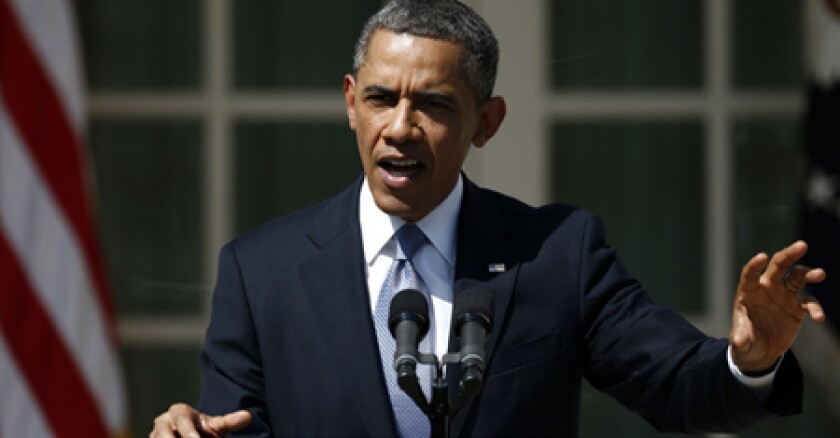For full coverage of Obama's budget, click here.
Obama has demanded that Congress vote on whether to require universal background checks and to ban both military-style assault weapons and high-capacity magazines. Similar policies already passed this year in New York, Connecticut and Colorado, with Maryland Gov. Martin O'Malley expected to sign a gun bill into law next month. The same proposals have been met with greater resistance, however, in Congress.By contrast, the five budgetary investments listed below aren't as contentious; they focus on enhanced record keeping, enforcement of current laws and the scientific study of gun violence.
1. $395 million for the Department of Justice to combat gun violence. The administration would increase funding by $173 million for the Department of Justice to run more criminal history background checks and to conduct more inspections of federally licensed firearms dealers. The money would also cover weapons tracing and ballistics analysis.
2. $222 million for state and local governments to prevent mass shootings. The money would cover up to 1,000 school resource officers and school counselors, the purchase of school safety equipment and grants for states to submit mental health records to the FBI’s National Instant Criminal Background Check System. It would also pay for developing better gun safety mechanisms, so that unauthorized users couldn’t fire a gun.
3. $332 million for juvenile justice programs targeting youth violence. The Justice Department names a handful of programs aimed at preventing juvenile delinquency, expanding youth mentoring, helping the children of incarcerated parents and lowering youth detention rates. One such initiative provides $25 million in grants to replicate successful community-based interventions that reduce gang violence.
4. $20 million for the National Violent Death Reporting System. Currently only 18 states participate in the system, which combines data collected by homicide detectives, coroners, crime lab investigators and medical examiners to understand the circumstances around violent death. The Centers for Disease Control and Prevention, which maintains the system, intends to expand reporting to all 50 states. State and local law enforcement use the data to identify high-risk areas of gang activity, but also to educate caregivers on potential warning signs of suicide.
5. $10 million for the Centers for Disease Control and Prevention. Since the mid-1990s, federal agencies have been prohibited from conducting scientific studies on what causes and prevents gun violence. Obama wants to revive that research. In 1995, gun rights groups got Congress to restrict any public health research about gun violence by the CDC that might be used to promote or advocate for gun control. It became a de facto ban, which eventually spread to other agencies within the Department of Health and Human Services, including the National Institutes of Health.











